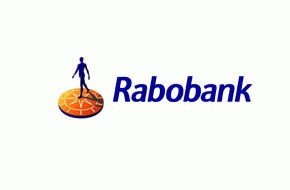
Content supplied by Rabobank
Supply growth across the big seven dairy exporting regions has stalled in recent months and set the tone for a more bullish market, with a New Zealand milk price of NZD 6.80/kgMS now within reach for 2018/19, according to Rabobank’s latest Dairy Quarterly report.
The specialist agribusiness bank says with milk supply growth out of Europe and the US failing to meet market expectations, global farmgate milk prices have moved off the lows posted at the start of the year and are expected to move seasonally higher through the second half of 2018.

“Recent milk pricing announcements in a number of regions, including New Zealand, confirm that the price cycle has now turned in most key export regions,” she said.
“While this will trigger a supply response, this response is likely to take time and be curbed somewhat by the pressure of rising feed costs on farm margins, and as such the global market is expected to remain well-balanced for the next six months.”
Ms Higgins said output from the ‘Big 7’ increased by just 0.5 per cent (year-on-year) in the three months to June 2018, the lowest since the end of 2016.
“Looking forward to the next three months, the combined global milk supply across the major export regions is expected to grow by only 0.4 per cent,” she said, “with momentum in supply not expected to build until the start of 2019.”
For New Zealand, the report says a favourable milk price and adequate feed reserves were likely to contribute to a lift in production for the new dairy season. “Assuming normal weather conditions, we anticipate New Zealand milk production will lift by two per cent in the coming dairy season,” Ms Higgins said.
On the demand front, the report says many buyers across the globe have cover and will remain side-lined in the coming months, however, China is expected to re-enter the market in a more meaningful way in the second half of 2018. “Chinese import demand has slowed, but they are expected to become more active in the second-half of the year.” Ms Higgins said.
“We expect much of the production growth out of New Zealand to be absorbed by increased demand out of China, with China heavily reliant on New Zealand product, particularly Whole Milk Powder.”
Without a disruptive event, Mrs Higgins said, global dairy markets should continue to be relatively stable, with global commodity prices expected to be largely range-bound for the rest of the year. “But it is not all smooth sailing,” she warned, “with some real risks to the outlook.”
Ms Higgins said central among these risks were the potential for further culling of the New Zealand dairy herd due to Mycoplasma bovis disease and an escalation in trade tensions between the US and Mexico, China and Canada.
“The targeted cull of 126,000 New Zealand dairy cows in an attempt to eradicate Mycoplasma bovis disease is not expected to have a significant impact on short-term milk production, given farmers have some flexibility as to when cows are culled and it is likely many will be milked over much of the season, Ms Higgins said. “However, the longer-term impacts are yet to be seen.”
“Further testing of this disease will occur over coming months, and it could result in further culling, with the discovery of a single infected cow potentially resulting in the culling of an entire herd,” she said.
Ms Higgins said trade frictions continued to dominate dairy news wires at present and were another risk for dairy markets. “Recently we have seen the US at loggerheads with both Canada and Mexico, as dairy products have been caught up in the tensions with changes to tariffs.”
“This week started with the news from China that their government was considering raising its import tariffs on US products which included 21 dairy product lines. However, the US has now raised the ante with a further unspecified USD 200bn of tariffs on Chinese goods, and the threat of a further USD 200bn if China responds again in kind.”
Ms Higgins said non-dairy tariffs also had the potential to significantly impact dairy markets.
“In addition to dairy tariffs, US alfalfa is subject to an additional 25 per cent import tariff. The US is China’s largest alfalfa supplier with US-origin alfalfa accounting for over 90 per cent of China’s import volumes last year. This is primarily consumed by the large scale dairy farms in China meaning this could hurt the domestic large scale dairy farms in a meaningful way.”
The dairy payout history by company is here.
We welcome your comments below. If you are not already registered, please register to comment
Remember we welcome robust, respectful and insightful debate. We don't welcome abusive or defamatory comments and will de-register those repeatedly making such comments. Our current comment policy is here.